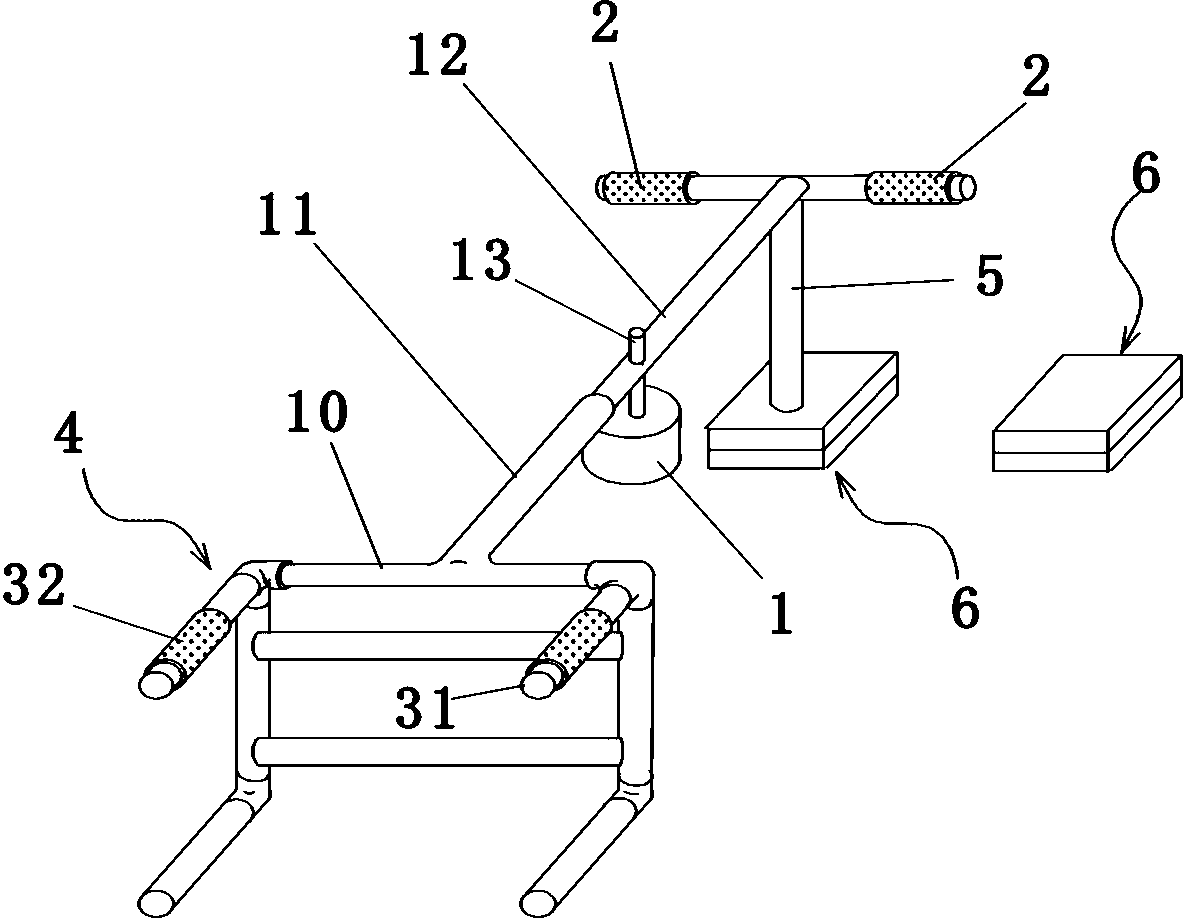Easy-to-collect-and-carry lever-type cardiopulmonary resuscitation compressor
A cardiopulmonary resuscitation, lever-type technology, used in cardiac stimulation, artificial respiration, physical therapy, etc., can solve the problems of occupying space, installation, patient positioning, time-consuming heart alignment, and large volume, saving trouble and time, Save assembly time, quick and easy action
- Summary
- Abstract
- Description
- Claims
- Application Information
AI Technical Summary
Problems solved by technology
Method used
Image
Examples
Embodiment 1
[0063]figure 1 , figure 2 , image 3 As shown, a lever-type cardiopulmonary resuscitation compressor that is easy to store and carry includes a fixed part and a swing part, and the swing part and the fixed part are connected by a swing shaft 10 to form a hinged relationship; the extension direction of the swing shaft 10 is horizontal and longitudinal; figure 2 , image 3 , Figure 5 , Image 6 , Figure 7 As shown, the pressing swing rod is formed by two movable sections, wherein the first segment 11 of the pressing swing rod is directly and fixedly connected with the swing shaft 10 vertically, and the second segment 12 of the pressing swing rod is connected with the pressing swing rod The first section 11 is provided with a movable plug-in fitting structure, and the movable plug-in fitting structure refers to: the rod body of the first section 11 of the pressing swing rod is hollow to form a jack 14, and the cross section of the jack 14 is the same as that of the pressi...
Embodiment 2
[0073] The difference between the second embodiment and the first embodiment is that the spacer in the second embodiment is different from the spacer in the first embodiment, and the rest of the structure is the same as that in the first embodiment. The spacer 6 in embodiment two is stepped, as Figure 10 shown. When it is necessary to adjust the pressing depth value, as long as the relative horizontal projection position of the cushion block 6 and the floating bottoming rod 5 is adjusted so that the bottom end of the floating bottoming rod 5 is aligned with different parts (different step surfaces) of the stepped pad 6, the The effective height of the pad can be adjusted. In other words, when the pressing head is naturally placed on the patient's heart and no pressure is applied by the hands, the pad 6 can be moved horizontally, such as Figure 10 status becomes Figure 11 state, the vertical distance between the upper surface of the pad 6 and the bottom end of the floating...
Embodiment 3
[0075] The difference between the third embodiment and the first embodiment is that the spacer in the third embodiment is different from the spacer in the first embodiment, and the rest of the structure is the same as that in the first embodiment. There are multiple pads in the third embodiment, and the vertical thickness of each pad is different from each other, and the pads are placed under the bottom end of the floating bottoming bar. Therefore, it is possible to adjust the effective raising height of the block, that is, to adjust the pressing depth value.
PUM
 Login to View More
Login to View More Abstract
Description
Claims
Application Information
 Login to View More
Login to View More - R&D
- Intellectual Property
- Life Sciences
- Materials
- Tech Scout
- Unparalleled Data Quality
- Higher Quality Content
- 60% Fewer Hallucinations
Browse by: Latest US Patents, China's latest patents, Technical Efficacy Thesaurus, Application Domain, Technology Topic, Popular Technical Reports.
© 2025 PatSnap. All rights reserved.Legal|Privacy policy|Modern Slavery Act Transparency Statement|Sitemap|About US| Contact US: help@patsnap.com



